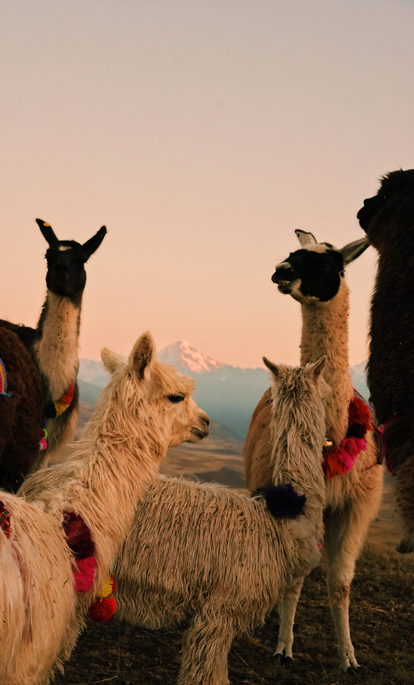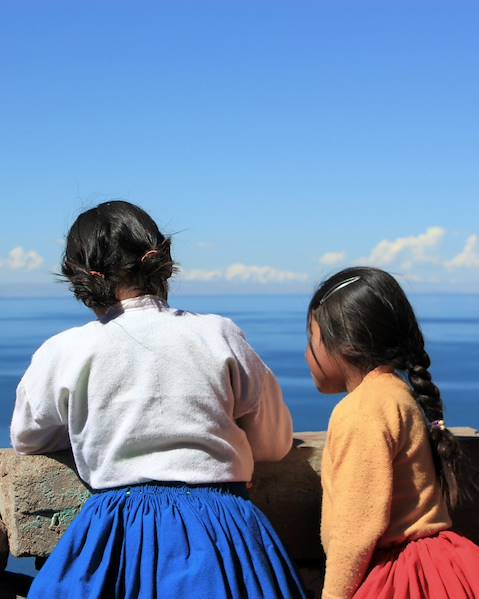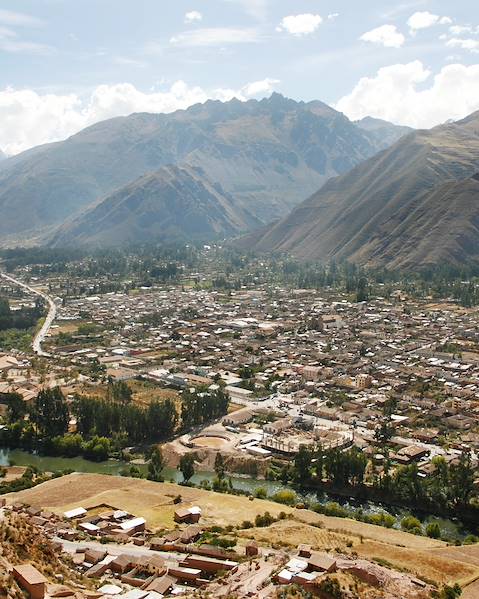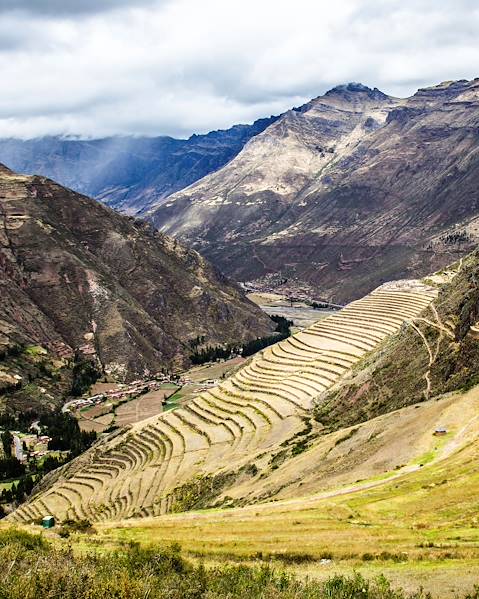Population
32,725,230 inhabitants (2019).
Official language
Spanish.
Language spoken
As well as Spanish, languages of indigenous groups are spoken, the two biggest being Quechua and Aymara.
People
Around 45% of Peru’s inhabitants are Amerindian, 37% mestizo (of mixed Spanish and Amerindian ancestry), 15% white European, and 3% black, Asian, or other. Religion An estimated 92% of Peruvians are Roman Catholics. Other Christianity faiths are also practiced and many indigenous groups have fused Catholicism with traditional beliefs.
National Holiday
28-29 July: Independence Day
Holiday Schedule
- January 1: New Year’s Day.
- January 18: Celebration of the anniversary of Lima.
- First week of February: Fiesta de la Candelaria.
- From 8 to March 15: Harvest Festival in Ica.
- From 15 to April 22: Easter Ayacucho.
- 1 May: Labour Day.
- June 24: Inti Raymi – Inca Festival of the Sun.
- July 28 and 29: Independence Day.
- August 30: Santa Rosa De Lima.
- End of September: Spring Festival in Trujillo.
- October: Lima, procession of Señor de los Milagros, the ‘Lord of Miracles’, patron of the city.
- October 8: Battle of Angamos.
- November 1: All Saints Day.
- December 8: Immaculate Conception Day.
- December 25: Christmas.
History
Among Peru’s most famous attributes, the ancient Incas always hover around the top spot – the impressive empire dominated the Andean region until the Spanish arrived in the 16th century. Yet we must not forget the great civilisations they succeeded. The Paracas (800 BC to 200 AD), for example, established on the Pacific coast, were renowned for their mastery of weaving. Or the Nazca people (200 BC to 600 AD), are noted for huge designs traced on the ground. The Moche culture (100-700) and Chimu (900-1470) left marks on the northern coast of Peru that remain today – the first was a warrior society, the second left splendid metallic remains and an archaeological site of Chan Chan, once the biggest city in the Americas. In the highlands, on the shores of Lake Titicaca, flourished Tiwanaku (400-1000), and the Wari (600-1000), were a civilisation to whom we owe the idea of Andean urban planning. The Incas (1200-1532), however, are the crowning glory. Their empire was called Tahuantinsuyo and it stretched from the south of Colombia to the centre of Chile, passing through Ecuador, Argentina, Bolivia and Peru, where its greatest political force was concentrated. Its capital was Cusco. One famous Inca legend tells the story of Manco Capac and Mama Ocllo, husband and wife and descendants of the Sun God, whose mission was to help the tribes of Lake Titicaca by teaching them agricultural techniques, clothing them, building houses and introducing religion to their society. They were tasked to find fertile land on which to build an empire – this land was in Cusco, which became the centre of the Incan civilisation. The second legend, which complements the first, tells the story of the four Ayar brothers and their four wives who emerged from a cave in Pacaritambo in Cusco. One of them was made king, changing his name to Manco Capac, and was the first of fourteen ancient Incas. Legitimised by magic, mysticism and the power of the sun, the civilisation of the Incas were deployed across the continent.
The most remarkable sovereign of Cusco was undoubtedly Pachacutec, whose reign (1438-1471) extended the borders and power of the empire exponentially. Ultimately, the Inca Empire was one divided between the two sons of Inca Huayna Capac: Huascar and Atahualpa. When Huayna Capac died and left no heir, Huascar and Atahualpa fought a bloody civil war for the title. Atahualpa was eventually victorious and wrecked revenge on his brother Huascar and his followers. The empire was therefore already weakened when Spanish conquistador, Francisco Pizarro, landed in 1531. The Spaniards quickly found allies among the native people under the rule of the Inca Empire. The Incas resisted fiercely however, taking 41 years to fully submit, at which point the last Inca, Tupac Amaru, was captured and executed in 1572. By then, colonisation was in place and the gold and silver made in Peru sailed to Spain regularly, assuring the power of Charles V and Philip II. Spanish colonies brought with them, among other things, Christianity and tax. The first, indigenous people introduced their ancestral beliefs to – adapting and introducing many of their own ancient deities to it, or yet keeping their own religion under the façade of Christianity. The second, tax, was created in 1535 in Lima. A Peruvian viceroyalty was also established to manage the colony. Abuse and disease massacred the native population, many of whom were wiped out by warfare with Spaniards and infectious diseases like smallpox they had no immunity to.
As the colony settled and grew, Peruvians aspired to free themselves. In the early nineteenth century, Spanish settlers in South America rebelled against Madrid, with Venezuela’s Simon Bolivar (1783-1830) and Argentina's Jose de San Martin (1778-1850) leading the fight. In 1821 San Martin, backed by soldiers, arrived in Lima and declared Peruvian independence. Hostilities lasted another three years until 1824, when Spain surrendered, although Peru’s independence wasn’t formally recognised until 1879. Tensions appeared between former allies and over the following decades, border issues caused more wars between Peruvians and their neighbours, with the War of the Pacific against Chile from 1879 to 1884 and a war against Ecuador in 1941. The political landscape was also tough, and the country saw coups and dictatorships succeed each other like the carriages of a train. In the 20th century, civil and military issues alternated, exposing the precarious institutional conditions of the country. The social situation deteriorated and in 1980, the Marxist guerrillas of the Shining Path appeared. Yet for twenty years, despite the ethical fragility of some leaders, the political situation has stabilised, poverty is in decline and the economy is growing steadily.
Policy
Under the terms of the 1993 Constitution, the president is the representative of the nation, the head of state, government and armed forces. Legislative power is exercised by a Congress of 120 members. A Supreme Court controls the judiciary. The President of the Republic and members of Congress are elected by universal direct suffrage for a period of five years.
Famous Peruvians
- César Vallejo (1892-1938). A Peruvian poet, writer, playwright. Considered to be one of the biggest pioneers of 20th century poetry, after a short and troubled life, Vallejo is now laid to rest in Montparnasse Cemetery in Paris.
- Inca Garcilaso de la Vega (1539-1616). A writer born in the Spanish Empire’s Viceroyalty of Peru. His father was a Spanish conquistador, his mother, a descendant of the Inca Huayna Capac and he’s thought to be the first Mestizo. He left an important testimony to the Inca civilisation in his book, Comentarios Reales de los Incas.
- Tania Libertad (born 1952). Peruvian by birth and Mexican by adoption, singer Libertad ranks among the greatest voices of Latin America.
- Jose Gabriel Condorcanqui Noguera (1742-1781), known as Tupa Amaru II. The leader of an Andean uprising against the Spanish. Noguera took the name of the last Inca, Tupac Amaru, to conduct a major revolt against the Spaniards.
- Mario Vargas Llosa (born 1936). A Peruvian writer, politician, journalist, essayist and college professor. A respected voice in Peru, Llosa won the Nobel Prize in Literature in 2010.
Etiquette
Courtesy and decorum are a key factor in getting along in all of South America and especially in Peru, where people are well-mannered and rarely lose their temper. Make the effort to learn a few basic Spanish phrases for major points with locals; greet people met at any time of day or night; ask permission to photograph or film someone; be patient regarding timetables of trains and planes (and any requests for service for that matter). But above all, regardless of circumstances, retain your composure. Anger is almost inconceivable in Peru and will no doubt worsen a situation. In exceptional times, a tone of exasperation will deliver your message effectively.
Peru has limited water resources, so we recommend consuming it responsibly, not wasting this most precious commodity.
Shopping
The sheer number of Peruvian handicrafts, in all their wonderful variety, are too rich to be detailed here. Instead, we’ll leave you with the pleasure of discovering them yourself in the many shops and street vendors you’ll come across along your route. Nevertheless, there are three nuggets of shopping information to note: Lima is great for alpaca clothing and fabric, designed and dyed in numerous contemporary styles, beautiful Andean musical instruments and shawls are best from Arequipa and bargaining, within reason, is commonly accepted.
Food
Peruvian cuisine offers a delicious dive into its ethnic tapestry – from tasty Creole cuisine and Spanish-inspired specialities to the kitchen of the mountains and the jungle from indigenous tribes and various delicacies from Peru’s ethnic minorities, including Chinese and African – the food in Peru is exciting, delicious and always evolving. Here is a partial list of Peruvian specialties: Ceviche, the national dish, is raw fish marinated in lime juice and a myriad of seasonings. Carapulcra is a stew of pork, dried potatoes, onion, garlic and spices. Tamales are corn-based doughy parcels filled with pork and other vegetables. Papa Rellena are potato croquettes stuffed with minced beef, fish or sausage – many versions exist depending on the place and occasion, accompanied with a mixture of cheese, vegetables and eggs. Juanes are a typical dish from the Amazon Rainforest and consist of turmeric-seasoned rice and chicken wrapped and cooked in banana leaves.
Drink
Tap water is unsafe to drink, so rely on bottled during your stay and avoid ice. Pisco Sour is one of Peru’s most notable drinks – it’s a sweet cocktail made from pisco (grape brandy) and citrus juices. Chicha morada is a deep red soft drink made with purple maize, fruit and spices. Masato is an ancient drink of the Amazon region made from yuca. Chicha de Jora is a yellow corn-based fermented beverage. And Inca Kola, of course, is one of Peru’s most popular – a soft drink created in Lima, it manages the unique feat of defeating both Pepsi and Coke in demand with its bubble-gum flavour and yellow colour.
















